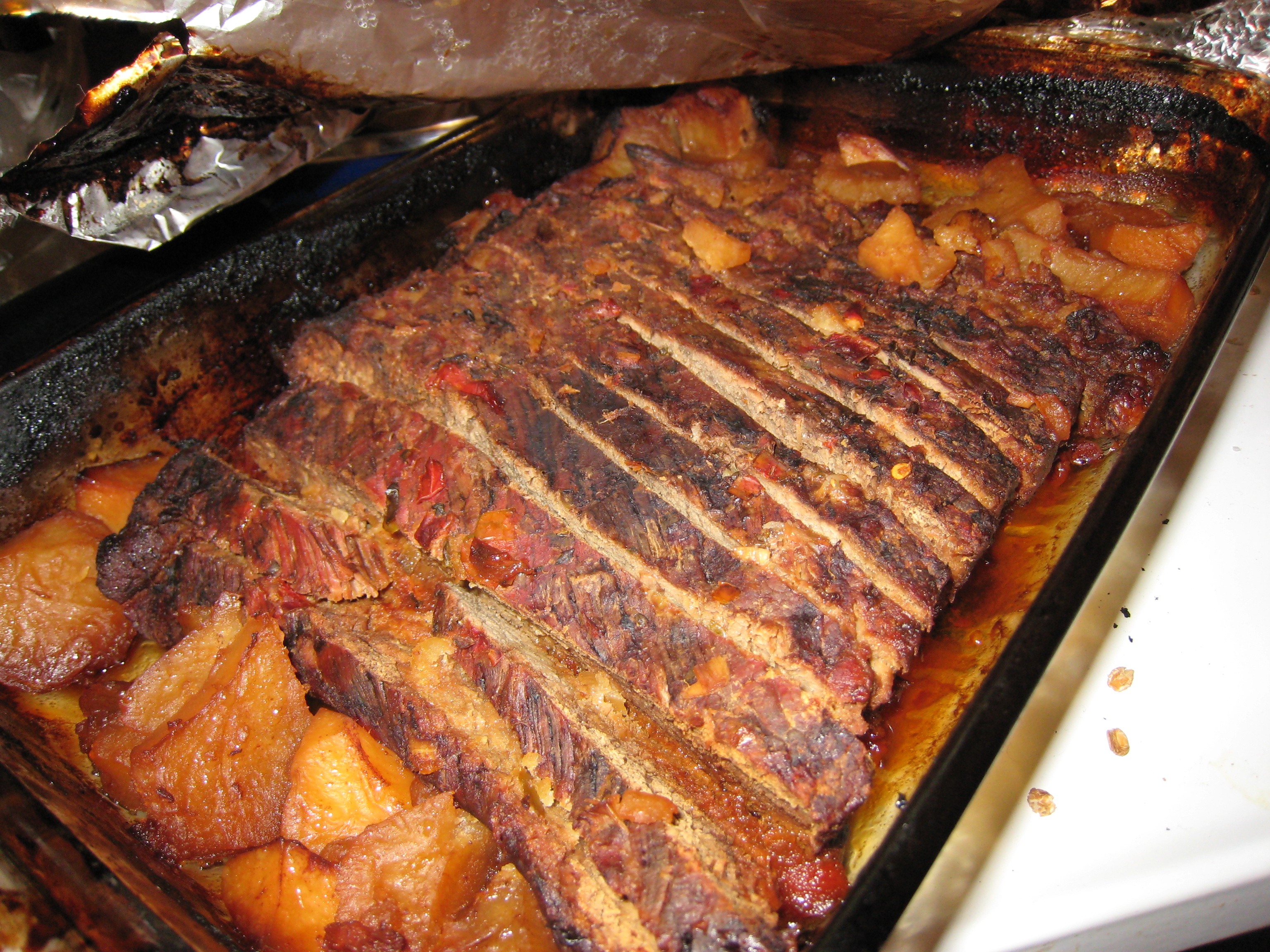Brisket, a cut of meat beloved for its rich flavor and potential for delicious slow-cooked dishes, goes by more than just one name!
This introduction delves into the other names for brisket, exploring the variations in terminology used around the world. We’ll discover how this cut is identified in different regions and cultures, highlighting the fascinating diversity in how we talk about food.
Traditional Brisket Terminology

Brisket, that flavorful cut of meat from the steer’s lower chest, might have a different name depending on where you hail from. While “brisket” is a common term in the United States and many other countries, things can get a little confusing when you travel the globe.
The Universally Understood Brisket
The good news is that “brisket” is widely recognized in culinary circles. This consistency helps avoid confusion for both chefs and home cooks when following recipes or ordering at restaurants.
A World of Brisket Names
While “brisket” reigns supreme in many places, here’s a glimpse into the diverse world of brisket terminology:
- United Kingdom: Here, you might encounter it as “beef breast” or the slightly more descriptive “thick flank” or “curly end.”
- Australia & New Zealand: Brisket takes on a brined and boiled form called “corned silverside.” When roasted, it transforms into “rolled brisket.”
- Germany: Fire up your grill! The German term for brisket is “Rinderbrust,” which translates to “beef chest.”
- France: Get ready for a mouthful! The French call brisket “poitrine de bœuf,” literally meaning “breast of beef.”
These regional variations showcase the rich tapestry of culinary traditions around the world, all celebrating this delicious cut of meat. So, next time you’re looking for brisket, be sure to consider the local terminology to ensure you get the perfect cut for your culinary adventure.
Culinary Terminology For Brisket Cuts
Brisket, a flavorful cut of meat from the steer’s lower breast, has carved out a place in various culinary traditions. However, understanding exactly which part of the brisket you’re dealing with can get tricky due to regional variations in terminology.
The American Breakdown:
In the United States, butchers typically divide the brisket into two main sections:
- The Flat Cut (First Cut, Deep Pectoral): This leaner section offers a more meaty texture.
- The Point Cut (Second Cut, Triangular Cut): Marbled with fat, this cut delivers richer flavor.
These distinct cuts cook up differently, making them suitable for various dishes.
A World of Brisket Names:
Travel the world, and you’ll encounter a delightful variety of names for brisket cuts. Here are a few examples:
- United Kingdom: Thick Flank or Curly End
- Australia & New Zealand: Corned Silverside (when brined and boiled)
- France: Poitrine de Bœuf
Why Standardize?
While these terms paint a vivid picture, standardizing culinary terminology for brisket cuts offers key benefits:
- Precision in Communication: Chefs and home cooks can clearly specify the exact cut they’re referring to, avoiding confusion.
- The clarity for Consumers: Knowing the difference between a flat cut and a pointcut empowers you to make informed purchasing decisions.
Understanding both the regional variations and the push for standardization will equip you to navigate the world of brisket with confidence!
Brisket: A World of Names for a Beloved Cut

Brisket, that flavorful cut of meat from the steer’s lower chest, boasts a surprising number of names around the globe. This diversity reflects its popularity and versatility in various culinary traditions.
- Vietnam: Known as “nạm,” it finds its way into steaming bowls of phở, the national noodle soup.
- Italy: Here, it transforms into “bollito misto,” a treasured dish from Northern Italy.
- Germany: Brisket goes by “Bruststück,” a straightforward term that translates to “breast piece.”
- Spain: Brisket takes the name “falda,” which can also refer to “skirt” – another cut from the animal’s lower region.
This global tour of names highlights brisket’s adaptability. Whether simmered in Vietnamese pho or braised in Italian stews, brisket transcends language barriers, offering delicious experiences worldwide.
Conclusion
Brisket, a flavorful and versatile cut of meat, boasts a surprisingly diverse range of names. This exploration into the world of brisket nomenclature highlights the fascinating interplay between regional traditions, culinary practices, and even languages. Understanding these variations goes beyond simply knowing what to order at the butcher shop. It allows for clear communication, fosters a deeper appreciation for global cuisine, and ultimately enhances the entire dining experience.
Regardless of the name – brisket, packer cut, poitrine, or something entirely different – this cut offers endless culinary possibilities. Whether slow-cooked to melt-in-your-mouth tenderness or smoked to achieve a perfectly crispy bark, brisket remains a favorite among food enthusiasts worldwide. So, the next time you encounter a new term for brisket, embrace it as an opportunity to delve into the rich tapestry of culinary traditions and discover a new way to savor this delicious cut.
References:
FAQ About Other Names For Brisket: Variations In Nomenclature For This Cut
Q: What are the alternative names for brisket?
A: Brisket is known by various names worldwide, including breast of beef, packer’s cut, point end, flat cut, and chest of beef.
Q: Why does brisket have different names in different regions?
A: The variations in terminology for brisket stem from cultural influences, regional traditions, and different cutting styles used in various cuisines.
Q: Are the different names for brisket associated with specific cooking methods?
A: While the alternative names for brisket may not directly correlate with specific cooking methods, they can sometimes hint at the cut’s anatomical location or preparation style.
Q: How can one identify brisket in a butcher shop despite the varied names?
A: To identify brisket at a butcher shop, look for a thick and tough cut of beef located beneath the first five ribs of the cow, usually sold either as a flat cut or a point cut.
Q: Are there any health differences associated with the different brisket names?
A: The various names for brisket do not imply significant health differences. The nutritional content and health implications remain consistent regardless of the terminology used.
Q: Do certain names for brisket indicate higher quality?
A: The different names for brisket typically do not indicate variations in quality. Quality is more dependent on factors such as marbling, freshness, and how the brisket has been raised rather than the specific name used to refer to the cut.

Johnny Knuckles Knock-out BBQ is a culinary haven for barbecue enthusiasts, offering a fusion of traditional BBQ and tantalizing street fare. Our secret to delivering mouthwatering dishes lies in our meticulous preparation process. Each cut of meat is lovingly hand-rubbed and slow-smoked over 100% hardwood, creating a symphony of flavors that will leave your taste buds dancing. Whether planning a special event or simply craving an unforgettable meal, Johnny Knuckles Knock-out BBQ is here to elevate your dining experience. Our catering services are designed to bring the sizzle and aroma of our delectable BBQ to your event, ensuring that every guest leaves with a full belly and a smile.